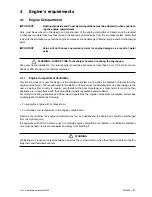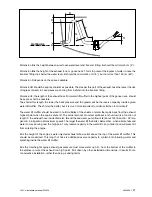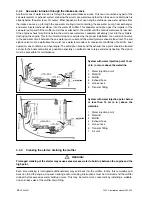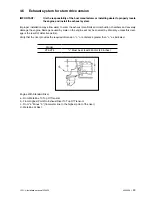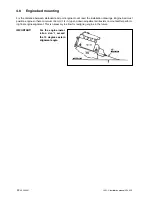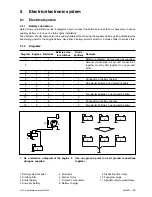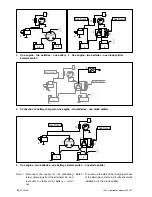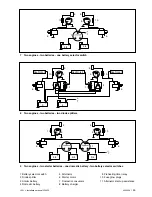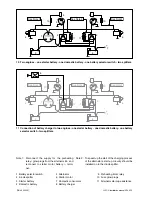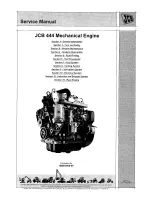
400202.01
31
vetus®
Installation manual VF4 VF5
4.7 Gearbox version: propeller shaft alignment
The engine must be exactly aligned with the propeller shaft. No matter what material is used to build a boat, the
material will be flexible to some extent. The boat’s hull will change its shape to a greater extent than is usually
realized when the boat is launched and operated in the water. Therefore, it becomes extremely important to
check the engine’s alignment at frequent intervals and to correct any errors when they appear.
Misalignment between the engine and the propeller
shaft often creates serious problems which are often
blamed on other areas suspected of causing the trouble.
Misalignment will cause excessive bearing wear, rapid
shaft wear, and will, in many cases, reduce the life of
the boat’s hull by loosening the hull’s fastenings. A bent
propeller shaft will produce these same effects, therefore
a perfectly straight propeller shaft is absolutely necessary.
One result of misalignment may be leakage of transmis-
sion oil through the transmission’s rear oil seal. If oil
should leak from this seal, check and make sure that the
alignment is within the limits prescribed.
Never attempt a final alignment when the boat is on land.
The boat should be in the water and have had an oppor-
tunity to assume its final water form. The propeller shaft/
transmission coupling alignment is best performed with the fuel and water tanks about half full, with all the usual
equipment on board, and, on sailboats, after the mainmast has been stepped and the final rigging has been
installed.
Take sufficient time to make this alignment — don’t be satisfied with less than perfect results.
The alignment is correct when the propeller shaft can be easily slipped backward and forward into the counter
bore, and when a feeler gauge indicates that the flanges come together at all points. In making the final check
for alignment, the transmission half-coupling should be held in one position and the alignment with the propel-
ler shaft half-coupling tested with the propeller shaft half-coupling in each of four positions (A), while rotated 90
degrees between each position. This test will also check whether the propeller shaft half-coupling is in exact
alignment on its shaft.
Then, keeping the propeller shaft half-coupling in one
position, the alignment should be checked by rotating
the transmission half-coupling in 90 degree increments,
checking dimension A while in each 90 degree position
until it has been rotated full-circle.
The engine’s alignment should be rechecked after the
boat has been in service for one to three weeks and, if
necessary, the alignment performed again. Usually it will
be found that the engine is no longer in alignment. This
does not mean that the first alignment has been done
improperly, rather, it means that the boat has taken some
time to take its final shape and that the engine’s bed and
stringers have probably absorbed some moisture. It may
even be necessary to realign the coupling halves again at
a later time.
Summary of Contents for VF4.140E
Page 1: ...Installation manual VF4 VF5 VF4 140E VF4 170E VF4 190E VF5 220E VF5 250E ...
Page 2: ...vetus Installation manual VF4 VF5 400202 01 Copyright 2012 Vetus n v Schiedam Holland ...
Page 22: ...20 400202 01 vetus Installation manual VF4 VF5 ...
Page 68: ...66 400202 01 vetus Installation manual VF4 VF5 ...
Page 71: ...400202 01 69 vetus Installation manual VF4 VF5 ...
Page 72: ...340401 01 12 07 Nederlands Printed in the Netherlands Vetus Diesel VF4 VF5 Nederlands ...





